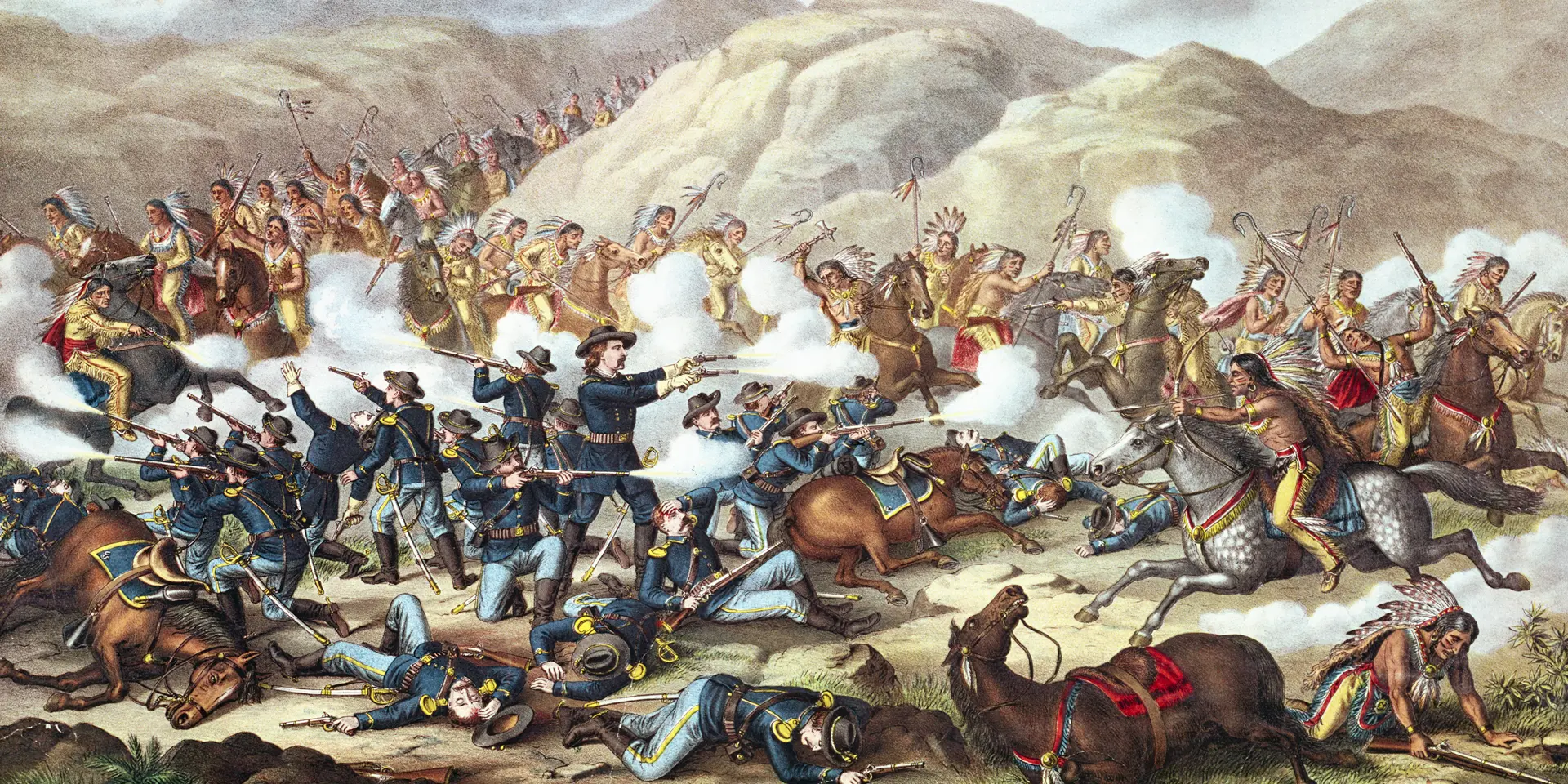Battle of the Little Bighorn
Battle of the Little Bighorn: An Overview
The Battle of the Little Bighorn, also known as the Battle of the Greasy Grass or Custer’s Last Stand, was a significant armed conflict that unfolded on the morning of June 25, 1876. This clash occurred between the Lakota, Cheyenne, and Arapaho tribes and the United States federal troops.

George Armstrong Custer led the U.S. Army’s 7th Cavalry to confront Native American tribes after they resisted relocation to reservations. Under the leadership of Sitting Bull, the Native forces outnumbered Custer’s troops, leading to a swift and devastating defeat for the U.S. Army.
[su_box title=”Battle of the Little Bighorn – Next years” box_color=”#fb0400″]
- Wednesday, June 25 2025
- Thursday, June 25 2026
- Friday, June 25 2027
- Sunday, June 25 2028
[/su_box]
What Was the Battle of Little Bighorn?
The U.S. government aimed to force Native Americans into Indian Reservations, which caused significant unrest among leaders like Sitting Bull and Crazy Horse. Tensions escalated when gold was discovered in the Black Hills of South Dakota in 1875, a region sacred to the Native Americans. In defiance of illegal encroachments, many Sioux and Cheyenne left their reservations to join Sitting Bull in the fight against U.S. forces.
By 1876, over 10,000 Native Americans had gathered to resist government actions along the Little Bighorn River. On the morning of June 25, Custer, defying orders, initiated an attack with just 600 men. Within an hour, Custer and all his soldiers were killed as Crazy Horse led 3,000 warriors to confront them.
Name Origins: “Greasy Grass” and “Custer’s Last Stand”
The battle is referred to as Greasy Grass in the Sioux language, referring to the lush valley near the Little Bighorn River that supported vital wildlife. The term symbolizes the land’s importance to the Native peoples. Conversely, Custer’s Last Stand signifies the defeat of General Custer and his troops.
Consequences of the Battle
The Battle of the Little Bighorn marked one of the worst defeats for the U.S. Army during the Indian Wars, reinforcing negative stereotypes about Native Americans. In response, efforts to confine tribes to reservations intensified, leading to the majority of the Sioux and Cheyenne being forcibly relocated within five years.
Today, the site is commemorated as the Little Bighorn Battlefield National Monument, honoring both the U.S. cavalry and Native warriors who lost their lives. Initially a national cemetery for Custer’s troops, it became a memorial for all who fought after the government recognized the sacrifices of Native Americans in 1991, constructing an Indian Memorial themed “Peace Through Unity.”
Visitor Experience at Little Bighorn Battlefield
The Little Bighorn Battlefield National Monument preserves the battlefield and serves as a memorial. Visitors can explore key sites such as Last Stand Hill, where Custer made his last stand, and the Reno-Benteen Defense Site. The park also features an Indian Memorial honoring the Lakota, Dakota, and Cheyenne warriors, along with a museum displaying exhibits about the battle and the involved cultures.


